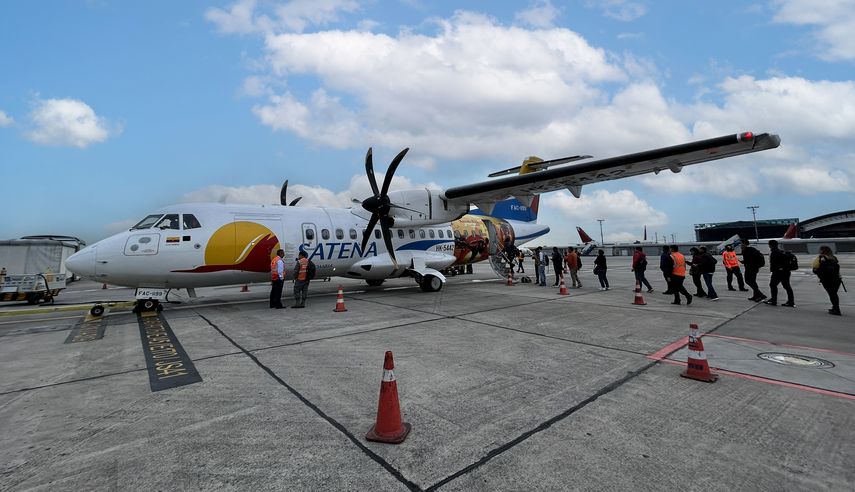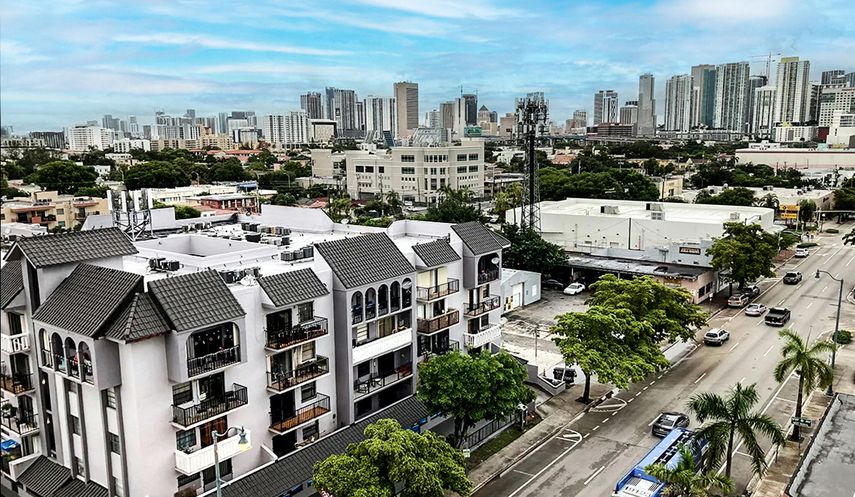Join Conociendo.co and Procolombia.co, which together work for the progress of Tumaco, to realize that there is a future here. Visit the brown or black sandy beaches, set sail in small boats or canoes to experience life in the mangroves and small villages overlooking the Pacific Ocean. Experience the effort behind each catch, a piece of good chocolate, the coconut that adds flavor to meals, the palm oil production and the tropical forests that speak of biodiversity.
Cacao
At La Bendición farm, the air smells of skill and sweat, where Julio Sevillano Rodríguez and a group of farmers grow cacao and other local produce.
“Cacao requires care and love to obtain the fruit, extract the beans, dry them, and sell them to make the pure, healthy chocolate that does so much good,” commented Sevillano Rodríguez, who believes family is the foundation of everything.
Walking among cacao trees, on firm, moist soil, the cacao pods are immediately visible. Some green, others yellow, red, or purple, depending on the variety or the degree of ripeness.
“Under the husk, which is somehow thick, there are a very diverse number of seeds surrounded by a white, sugary pulp,” he explained.
When the pod is cut in two, the inner world of each fruit can be appreciated. Seeds surrounded by pulp that hold the precious treasure of cacao when dried in the sun. White, sugary pulp used to make a tasty drink with cow's milk and a touch of condensed milk to stimulate the palate.
"Eating chocolate, especially when it has more than 65% cocoa, helps improve health and emotions," he stated.
Bocagrande
Near Tumaco, but only accessible by sea, lies Bocagrande and its wide, brown-sand beaches surrounded by vegetation and tranquility, where a bright future for investors can be predicted.
Whether sunbathing on the beach, enjoying a refreshing swim in the ocean, or simply walking along trails surrounded by mangroves, the natural setting invites you to relax and disconnect from your routine to recharge your batteries.
At the María del Mar restaurant, which also offers cabins for overnight stays, the menu features dishes prepared by skilled female cooks following centuries-old recipes with crabs, clams, and fish with coconut milk, or simply fried, accompanied by white rice, salad, and patacones (fried plantains) that enhance the flavors.
Young man Leodán, who oversees managing matters at the restaurant, enjoys the tranquility of Bocagrande. "I've lived here for two years," he proudly proclaimed.
"Recess is the most important thing in life," he emphasized. “Here you live peacefully, far from the problems of the city, between the sea, sand, and mangroves,” he said, biting into a guava he picked from a guava tree nearby.
Nature Reserve
Two hours by road from Tumaco, a group of families descended from the Awá indigenous people cultivate and care for their lands, while also take care of the Monteloro Nature Reserve.
This natural reserve covers more than 110 hectares of land where nature shines along long trails surrounded by trees, wildlife, birds, streams, waterfalls, and even a small, endangered primate.
Here, harmony between nature and humanity coexists, far from the maelstrom of urban pollution.
"There are two trails, one long and one shorter," commented guide Esteban García as we soaked up the clean, refreshing air surrounded by chlorophyll.
We took the long trail, complemented by rudimentary bridges made of reed cane, and steep descents and ascents marked by stones, to reach an immense matapalo rubber tree, which stands more than 100 feet tall and allows us to use its hanging roots, reminiscent of Tarzan in the jungle.
A small cabin serves as a reminder of the birds in the area. From there, in absolute silence, you can hear the whistling and singing of birds, and watch parrots, hummingbirds, umbrella birds, and Nariño partridges, among others, fly by.
"We believe in the importance of protecting and valuing flora, fauna, and our ancestral culture," stated the Awá guide.
Mangrove
If the exhausting work on the fields is admirable, the hard labor of the women shell collectors is astonishing, juggling as they walk on mangrove roots and wade through the mud in search of piangua, a nutrient-rich mollusk that is part of the local traditional cuisine.
To better understand and appreciate this exhausting and poorly paid occupation, which also seeks to protect the mangroves by cultivating new plants, we put on high boots to wade through the mud and juggle our way through the thickets of roots in search of the tasty delicacy, which is then complemented by local culinary recipes.
Once inside the mangrove forest, which feeds on salt water, we fully appreciate the arduous work that also entails the passage and the nuisance of mosquitoes.
Coconut Palms
We board another small boat, under the resplendent Pacific sun, and head to a coconut palm plantation where, in addition to drinking the delicious water and savoring the white flesh, we learn how much we don't know about this tropical fruit, from the seemingly simple planting process to obtaining the fruit.
It's worth noting that the coconut is one of the signature ingredients in traditional cuisine in Tumaco, the Colombian Pacific, and the entire South American country, complementing recipes with meats from the sea or land, rice, drinks, and sweets. A juicy and tasty ingredient you can try in multiple dishes at Mr. Coco restaurant in Tumaco.
On the way back to Tumaco by sea, a stop at a cliff allows us to visit the humble community of Llanaje, where some 400 residents contribute to cleaning up the environment with new plantations, in exchange for subsidies from large companies.
Sugarcane
Near the Ecuadorian border, a two-hour drive from Tumaco, sugarcane is another prized product of the land, providing sweetness, alcoholic beverages, and a source of energy.
"These are lands that, little by little, we have recovered after eradicating more than 70% of coca leaf production in the area," commented one of the plantation workers, proudly showing off an old sugarcane mill, dating back to the colonial era and powered by donkeys.
Viche is produced here, a liquor obtained by fermenting and distilling sugarcane juice. The company is seeking full approval by Colombian law to be marketed nationwide.
Fishing
The Colombian Pacific is rich in seafood, and fishing is embedded in the life, cuisine, and economy of the Tumaco people.
We return to the seaport and board a canoe to learn how to traditionally fish for a diverse variety of fish and shellfish, including billfish, snapper, and shrimp.
First, we stock up on bait on an ephemeral island of brown sand that floats when the tide goes out.
We throw out ropes, previously rigged with hooks and bait, and wait patiently for our catch.
Once the rope pulls, it signals that something is about to be caught, and the excitement of a mission accomplished kicks in with the option of returning the fish to the sea.
From mid-July to October, humpback whales can be seen off the Pacific coast of Tumaco. These cetaceans travel more than 8,000 kilometers from the South Pole and arrive in the warm waters of Tumaco to mate, give birth, and feed their calves.
It's the life and adventure of a predominantly fishing and agricultural area, blessed by nature and gastronomy, where the Afro-descendant culture, humility, and candor of its people are its best calling card.
How to Get There
After changing planes in Bogotá, Medellín, or Cali, arrive at Tumaco Airport, located just five minutes from the city.
You do not need a visa if you are traveling with a U.S. passport. Otherwise, you should contact the Colombian consulate.
Where to Stay
Tumaco has several hotels, apartments, and resorts for all budgets.
Visit Conociendo.co website for information about the destination, themed excursions, and available offers.
Saving Money
The U.S. dollar is strong, and traveling to Colombia is very affordable.
However, follow these tips to save money. DO NOT EXCHANGE MONEY before traveling or at your destination. Most tourists tend to exchange dollars, unaware that they are charged a fee, which is often excessive.
It's better to deposit money in your bank account and use your ATM card as soon as you arrive at the airport. This way, you'll save on the exchange fee and get the best international rate available.
Consult your banking institution about a possible international service charge.
You can also use credit cards in stores, restaurants, and hotels.

























